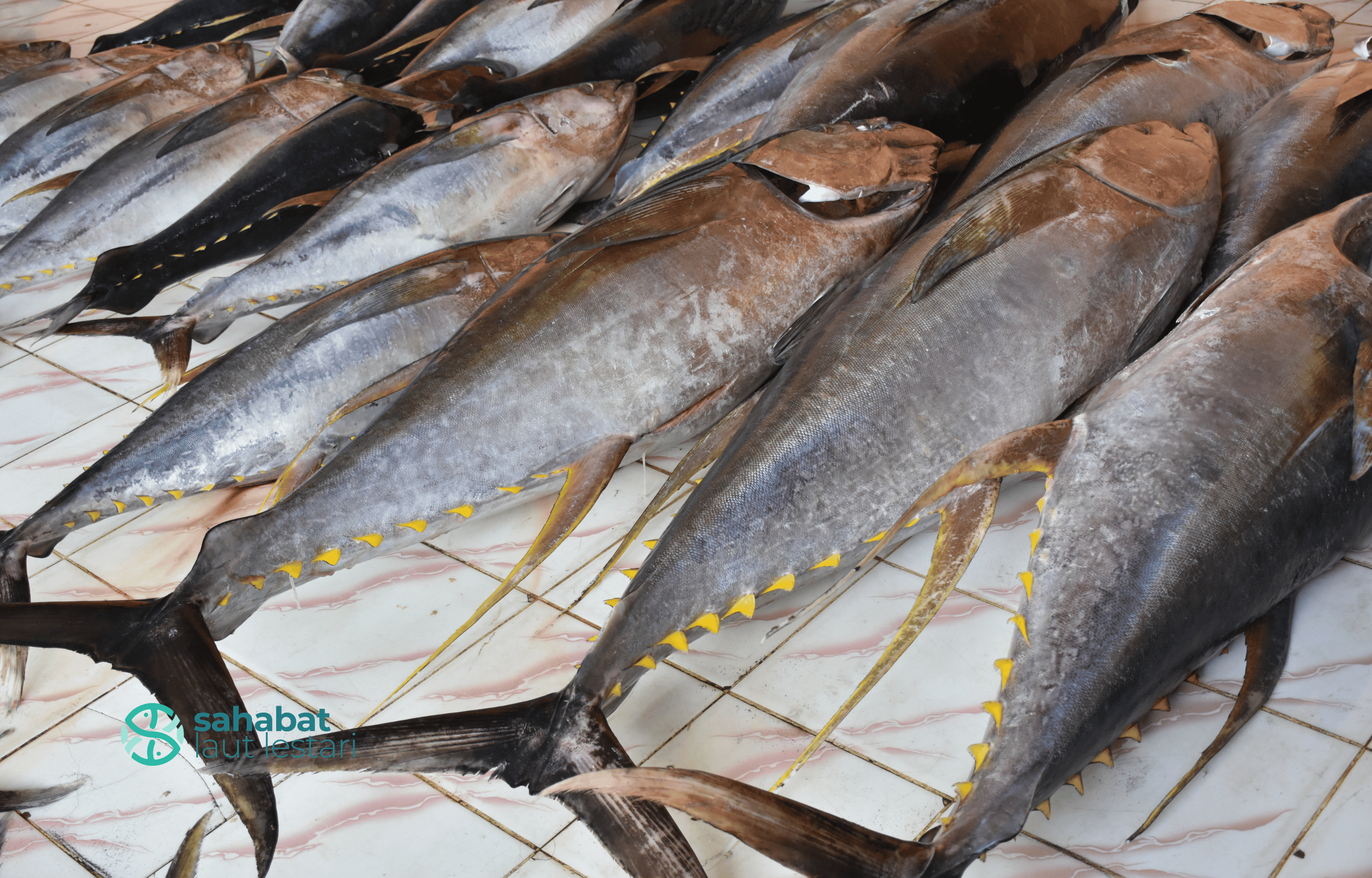World Tuna Day is celebrated on May 2nd to promote the sustainable management and conservation of tuna populations worldwide. Tuna fish species belongs to the Scombridae family, which includes mackerel and bonito, and is a widely sought-after and prized fish species found in oceans all over the globe. The article discusses various species of tuna, including Yellowfin, Bluefin, Skipjack, Bigeye, and Albacore Tuna, their unique features, and their habitats.
1. Tuna Fish Species : Yellowfin Tuna
Yellowfin Tuna (Thunnus albacares) is a large and robust fish species that can reach lengths of up to 2.4 meters and weigh as much as 200 kilograms. The fish’s body is streamlined, enabling it to move rapidly through the water, with a blue-black metallic color on the back and upper sides, and silver-white on the belly. Yellowfin Tuna’s respiratory system is distinct, allowing it to breathe efficiently while swimming at high speeds, and it feeds on various smaller fish, squid, and crustaceans.
Yellowfin Tuna is captured using various techniques, including purse seine, pelagic longline, gill net, and pole and line, with recreational fishing being supported in several regions. Purse seine fishing accounts for the largest catches of Yellowfin Tuna worldwide, with the majority destined for canning, while the larger fish from longline fishing is sold fresh or frozen, with some being sold in sashimi markets.
 © sahabatlautlestari.com2. Tuna Fish Species : Bluefin Tuna
© sahabatlautlestari.com2. Tuna Fish Species : Bluefin Tuna
Bluefin Tuna (Thunnus thynnus) is a highly valued tuna species known for its delectable meat, which is considered a delicacy in many parts of the world. It is one of the largest tuna species, with a maximum length of over 3 meters and a weight of up to 600 kilograms. Bluefin Tuna is a warm-blooded fish with a unique physiology that enables it to maintain a high body temperature, allowing it to swim at high speeds and in deep, cold waters.
The species is currently taken on several gear types, including purse seines, longlines, traps, and a variety of hand gears. Bluefin Tuna is also an important gamefish throughout its range. It is a highly valued species with much of the catch entering the Japanese sashimi market.
3. Skipjack Tuna
Skipjack tuna (Katsuwonus pelamis) is a species of tuna that is widely distributed throughout the world’s oceans. It is a smaller species of tuna compared to the larger and more highly valued Bluefin tuna. It has a streamlined body shape, with metallic blue-black coloration on the back and upper sides, and a silver-white color on the belly. Like other tuna species, it has a unique respiratory system that allows it to breathe efficiently while swimming at high speeds.
Skipjack tuna is a highly migratory species that is found in both tropical and subtropical waters around the world. Skipjack tuna is primarily caught using purse seine nets, which are large cylindrical nets that are deployed around schools of fish swimming near the surface. Once the net is deployed, the bottom of the net is closed, trapping the fish inside.
The tuna are then hauled on board the fishing vessel and sorted by size. Skipjack tuna is commonly used for canning due to its smaller size and abundant availability. It is also used fresh or frozen for human consumption and as bait for other fisheries.
4. Bigeye Tuna
Bigeye tuna (Thunnus obesus) is a species of tuna that is found in tropical and subtropical waters around the world. It has a streamlined body shape, with metallic blue-black coloration on the back and upper sides, and a silver-white color on the belly. Bigeye tuna has a unique respiratory system that allows it to breathe efficiently while swimming at high speeds.
Bigeye tuna is primarily caught using longline gear, which consists of a main fishing line that can be several kilometers long, with smaller lines branching off the main line. Bigeye tuna is highly valued for its meat and is commonly used in sushi and sashimi. It is also used for canning and fresh or frozen for human consumption.
5. Albacore Tuna
Albacore tuna (Thunnus alalunga) is a species of tuna that is found in temperate and tropical waters around the world. It is one of the smaller species of tuna and is often referred to as “white tuna”.
Albacore tuna is a streamlined fish, with a metallic blue-black coloration on the back and upper sides, and a silver-white color on the belly. It grows up to 1.4 meters in length and can weigh up to 60 kilograms. Albacore tuna has a unique respiratory system that allows it to breathe efficiently while swimming at high speeds.
Albacore tuna is primarily caught using trolling gear, pole, and line, and sometimes with purse seines. Albacore tuna is highly valued for its meat, which is known for its firm texture and mild flavor. It is commonly used in sushi and sashimi and is also a popular choice for canning.
The sustainability of tuna fisheries worldwide is a concern despite their popularity. Overfishing has caused population declines and resulted in serious ecological and economic consequences. Additionally, bycatch is a significant problem for many tuna fisheries, as unintended species such as dolphins, sea turtles, and sharks are often caught using fishing methods. Another issue is habitat destruction, as tuna require specific habitats to survive. Recognizing the importance and diversity of tuna species in our oceans can help us work towards a sustainable future, ensuring that these impressive fish continue to thrive for future generations.
Sahabat Laut Lestari is committed to promoting sustainable fisheries through effective measures such as implementing Fisheries Improvement Programs and utilizing TraceTalesᵀᴹ, a traceability technology. For more information on our programs, please feel free to contact us.

